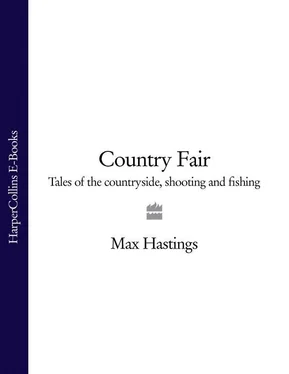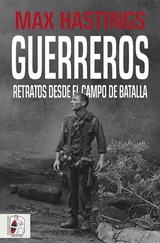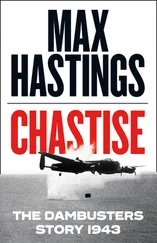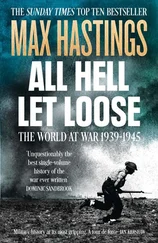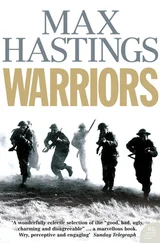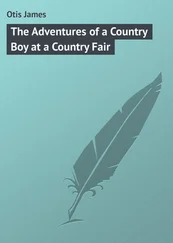This is the third collection of rural writings I have published. I should acknowledge a debt to Robert Lacey, my editor at HarperCollins, who does so much to smooth the eccentricities of my prose, even when these concern implausible nuances of field sports. Much of the book is adapted from pieces I have written over recent years for The Field , to whose editor Jonathan Young I owe much. He has become a cherished friend as well as one of Britain’s staunchest and shrewdest standard-bearers for the cause of the countryside. I have also included here a chapter based on speeches I have made on behalf of the Campaign to Protect Rural England, concerning the other great countryside issues – the preservation of our green spaces and the way of life of those who inhabit them. The CPRE is strictly neutral on field sports. I should stress that the views expressed in this book are personal, and do not represent those of that body, whose business and membership are fighting for our landscape. The CPRE rightly avoids engagement in such contentious matters as fox-hunting. But preserving our countryside is a challenge embracing many strands. Even if different country people fight different battles, these should be perceived as complementary, not contradictory.
I hope readers will gain pleasure from sharing some of my experiences of rural and sporting life, even if almost all of you are more skilful in their practice than myself. In describing my own doings, the only concession I make to discretion is sometimes to change the names of characters with whom I have shared them, to spare their blushes, if not my own. I am conscious that these writings reflect a privileged experience. In recent years, I have been lucky enough to visit some of the finest rivers and shoots in Britain and abroad, and to enjoy wonderful sporting opportunities. It was not always so. I spent my early sporting life, as most of us do, picking crumbs from beneath the table. My natural habitats for many years were modest day-ticket fisheries and walked-up hedges. I reached great grouse moors and salmon pools only relatively late in the day. I have fed from the silver spoon only after a long acquaintance with a wooden one, which I hope is some excuse for extolling the joys of butts and double-gun days.
I have called this collection Country Fair , which reflects the range of joys and beauties we encounter in pursuing our romance with rural Britain. The title also represents a gesture of filial affection, as my first chapter will explain.
Max Hastings
Il Pinquan, Kenya
March 2005
A S ANYONE WHO reads my writings will have noticed over the years, I am addicted to rural history. Not to nostalgia, because we should recognise that, in the countryside as elsewhere, over the last half-century some things have grown better rather than worse. There is no surer shortcut to senility than forever to be lamenting a lost past. Yet it is always pleasing to relate the world we know today to that which our parents and grandparents inhabited. I have been thumbing through the bound volumes of a now-forgotten magazine named Country Fair , which flourished for a time in the 1950s, half a century ago. It holds a special charm for me, because my father created and edited it alongside that great Wiltshire farmer and writer A.G. Street.
Successive issues of Country Fair captured snapshots of a world I can just remember, in which the combine harvester was slowly replacing the binder and thresher; BSA advertised a single-barrel shotgun (‘hitherto for export only’) at £18.2 s .11 d ; and ‘B.B.’ in his shooting column urged the merits of a stuffed cat as a surefire lure for carrion crows. J. Hughes-Parry described how he gaffed a thirty-seven-pound spring salmon for his wife Pat on the Welsh Dee on 26 March, among a host of lesser monsters which fell to his rod that season. Jack Ivester-Lloyd wrote about hunting clothes, telling me something I never knew: ‘The custom observed by many hunts of asking farmers who come out with them to wear black coats and hunting caps came into being for a very good reason. It is done so that others may easily recognise the men over whose land they may be riding and who, therefore, should be treated with special courtesy.’ Arthur Street described, with copious diagrams, the art of setting a course to plough a field.
My mother, Anne Scott-James, wrote deploring the fashion in which old cottages in our villages were being pulled down. Landlords found this cheaper than making repairs, when statutory controls restricted many rents to three or four shillings a week. Mother’s rage was inspired by the demolition of a very old thatched cottage immediately opposite our own. ‘The Whitehall bureaucrats say people must be cleared out of sub-standard properties,’ she wrote, ‘and they declaim violently against “country slums”. They regard a man with money to spend on converting an old cottage with hatred, and talk of “the wrong people” getting homes…As fast as new houses are built in the country, old ones are pulled down. It doesn’t make sense.’
The magazine’s ‘topic of the month’ for July 1951 was that of farm holidays. Agriculture needed a lot of scarce seasonal labour between July and November – ‘It wants twelve to reap what it takes one man to sow.’ For several decades in the early and mid-twentieth century, townsmen were encouraged to take cheap holidays by boarding or camping on a farm. In high summer they paid thirty-five shillings a week for their keep – £1.75 in modern money – and could earn one shilling and sixpence an hour – around 7p – for their labour. By October and November, the rate for a week’s bed and rations on a farm had fallen to a pound, and wages had risen to one shilling and ninepence.
Ralph Wightman, a Dorset farmer who was also a well-known writer of the period, urged the virtues of the farm camper not only to provide a hand, ‘but because his labour holiday will show him the real country. He will see the fields as a workshop instead of a playground. He will go back with a different feeling about our British heritage.’ Would that it was feasible to do the same today, for a new generation of urban dwellers! Elsewhere in Country Fair that summer of 1951, Lady Patricia Ward explained how she rented a Suffolk farmhouse for £60 a year, and persuaded her trustees to release the money to equip and decorate it from top to bottom for £1,190. A village dweller, Evelyn Gibbs, described how mains water was at last being connected to her hamlet, provoking head-shaking among elderly inhabitants about the consequences of this reckless innovation, when main drains were still lacking.
Maurice Burton, the magazine’s resident naturalist, lamented the decline of the dormouse, which he blamed upon the spread of grey squirrels. The famous amateur rider and breeder John Hislop wrote about the charms and horrors of owning a racehorse. Training fees were running at an extravagant seven guineas a week, plus 10 per cent of winnings. A jockey received five guineas for a losing ride and seven for a winner. It cost £100 to enter a horse for the Derby.
Here is some miscellaneous rural information from the same page: did you know that Northamptonshire is the only county of England to have nine others abutting on it? Or that until the late seventeenth century, July was called Jooly? Or that a Leicestershire acre used to be 2,308\\¾ square yards, and a Westmoreland one 6,760 square yards? In Anthony Armstrong’s essay on Sussex, he quotes a disobliging comment on the county by one Dr Burton in 1751: ‘Why is it that the oxen, the swine, women and all other animals are so long-legged in Sussex? May it be from the difficulty of pulling the feet out of so much mud?’
Читать дальше
